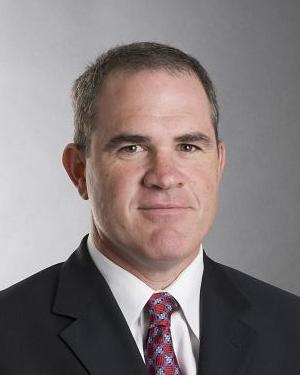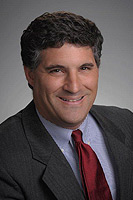Here are five key ideas to make ambulatory surgery center revenue cycle management better.
1. Put the right revenue cycle team together. The surgery center depends on collecting payments on-time and in-full. "You have to pay attention to what is going on in the business," says Jersey Shore Ambulatory Surgery Center Administrator Marti Potter. "You have to make sure the claims are coded right. If you haven't gotten paid in 30 days, you're in trouble. Let the payer know you are watching and you want your money sooner rather than later."
The best type of employee to have in revenue cycle management is someone who is willing to go the extra mile, Ms. Potter said, to ensure things are done right. These staff members must also be able to collect from patients. "I don't ask the collectors to be nice," said Ms. Potter. "I ask them to bring me the money."
 To bring in the best employees, MedHQ CEO Tom Jacobs suggests ASC owners and operators:
To bring in the best employees, MedHQ CEO Tom Jacobs suggests ASC owners and operators:
• Develop a well-written job description.
• Define the ASC's true core values. That is, what makes it unique from other ASCs in terms of culture?
• Determine clear critical attributes required for success at the job. Then, use behavioral questions to determine if candidates have those attributes.
• Use peer interviews to select candidates. "Use the 'A' players already in your organization to help hire new employees," Mr. Jacobs said.
2. Identify claims denials trends. Prompt, accurate billing — with attention paid to implants and bundled codes — will lead to a decrease in payer denials and Days Sales Outstanding. The first step to eliminating claims denials is reviewing the management information system's (MIS) rejections and denials report regularly.
Common errors on the front-end of the billing process include inputting incorrect patient information such as the payer ID number and omitting patient information such as Jr. or Sr., which will lead to the rejection of claims. Incorrect use of modifiers is a common back-office issue which also gives rise to payer rejections. "When surgery centers get coding sheets back, someone needs to be mindful of procedure code modifiers. Payers use different modifiers for the same procedure, for example a -50 and LT/RT, so billers need to be aware of which payers require which modifiers," says Michael Orseno, revenue cycle director at Regent Surgical Health.
claims. Incorrect use of modifiers is a common back-office issue which also gives rise to payer rejections. "When surgery centers get coding sheets back, someone needs to be mindful of procedure code modifiers. Payers use different modifiers for the same procedure, for example a -50 and LT/RT, so billers need to be aware of which payers require which modifiers," says Michael Orseno, revenue cycle director at Regent Surgical Health.
Building custom edits in both the MIS and clearinghouse that will kick back claims prior to them being sent to payers is one strategy to decrease back office rejections. Regent centers use HST Pathways and ZirMed, a company that provides services to automate the revenue cycle process, both of which allow for custom edits. In order to prevent front-office rejections, management should implement policies and procedures that address the specific errors on the rejection report.
3. Prepare for the ICD-10 conversion. Healthcare providers are working to make the switch to ICD-10 over the next few months, which will be required in October 2014. The transition will take hours of coder and physician education, and experts predict a bottle-neck in claims processing during the initial implementation period.
 "ICD-10 is a huge concern and I think we have to prepare for that," says Joe Zasa, JD, managing and founding partner of ASD Management. "I would reserve three months cash to get ready for the transition. We have to see how payers react and pay based on the ICD-10 changes."
"ICD-10 is a huge concern and I think we have to prepare for that," says Joe Zasa, JD, managing and founding partner of ASD Management. "I would reserve three months cash to get ready for the transition. We have to see how payers react and pay based on the ICD-10 changes."
He recommends beginning to set aside cash at the beginning of the year to have enough saved by October. "You can always distribute it out at the end of the year if it turns out the implementation is no big deal," says Mr. Zasa. "If it becomes a big deal, you have to have the cash."
4. Talk to vendors about their transition plans. At the most basic level, your software will need to accommodate many more codes than it did previously. "The tables you work from where all the codes are stored have to be modified for the code set," Ron Pelletier, vice president of market strategy at SourceMedical says. "You need to think about what testing your vendor is doing. Can your system performance handle that?"
Talk to vendors and make sure that they will provide you with the updates you need to use ICD-10. "Make sure whomever your vendor is that they provide and you subscribe to an electronic code distribution service where you are getting those filed electronically," he said, adding that you do not want a staff member to be forced to input all 80,000 codes at the last minute.
 5. Work with physicians for more detailed documentation. Detailed documentation is important for ASC procedures, especially important for minimally invasive spine procedures because it has a major impact on reimbursement. "People have trouble getting that from surgeons," says Carolyn Neumann, CPC, senior manager of coding and coverage access for Specialty Healthcare Advisers, but the use of pop-ups in electronic health records can make detailed documentation easier.
5. Work with physicians for more detailed documentation. Detailed documentation is important for ASC procedures, especially important for minimally invasive spine procedures because it has a major impact on reimbursement. "People have trouble getting that from surgeons," says Carolyn Neumann, CPC, senior manager of coding and coverage access for Specialty Healthcare Advisers, but the use of pop-ups in electronic health records can make detailed documentation easier.
Coordination between ASCs and surgeons is key to receiving the right reimbursement. Many payers are coordinating their reimbursements to include both physician and facility claims. If reported codes do not match, the entire claim — for the physician and the facility — can be denied.
More Articles on Surgery Centers:
15 Surgery Centers Adding Physicians
8 Top Challenges for ASC Physician Recruitment
Cut Costs With Better Staff Management: 5 Best Ideas
1. Put the right revenue cycle team together. The surgery center depends on collecting payments on-time and in-full. "You have to pay attention to what is going on in the business," says Jersey Shore Ambulatory Surgery Center Administrator Marti Potter. "You have to make sure the claims are coded right. If you haven't gotten paid in 30 days, you're in trouble. Let the payer know you are watching and you want your money sooner rather than later."
The best type of employee to have in revenue cycle management is someone who is willing to go the extra mile, Ms. Potter said, to ensure things are done right. These staff members must also be able to collect from patients. "I don't ask the collectors to be nice," said Ms. Potter. "I ask them to bring me the money."
 To bring in the best employees, MedHQ CEO Tom Jacobs suggests ASC owners and operators:
To bring in the best employees, MedHQ CEO Tom Jacobs suggests ASC owners and operators:• Develop a well-written job description.
• Define the ASC's true core values. That is, what makes it unique from other ASCs in terms of culture?
• Determine clear critical attributes required for success at the job. Then, use behavioral questions to determine if candidates have those attributes.
• Use peer interviews to select candidates. "Use the 'A' players already in your organization to help hire new employees," Mr. Jacobs said.
2. Identify claims denials trends. Prompt, accurate billing — with attention paid to implants and bundled codes — will lead to a decrease in payer denials and Days Sales Outstanding. The first step to eliminating claims denials is reviewing the management information system's (MIS) rejections and denials report regularly.
Common errors on the front-end of the billing process include inputting incorrect patient information such as the payer ID number and omitting patient information such as Jr. or Sr., which will lead to the rejection of
 claims. Incorrect use of modifiers is a common back-office issue which also gives rise to payer rejections. "When surgery centers get coding sheets back, someone needs to be mindful of procedure code modifiers. Payers use different modifiers for the same procedure, for example a -50 and LT/RT, so billers need to be aware of which payers require which modifiers," says Michael Orseno, revenue cycle director at Regent Surgical Health.
claims. Incorrect use of modifiers is a common back-office issue which also gives rise to payer rejections. "When surgery centers get coding sheets back, someone needs to be mindful of procedure code modifiers. Payers use different modifiers for the same procedure, for example a -50 and LT/RT, so billers need to be aware of which payers require which modifiers," says Michael Orseno, revenue cycle director at Regent Surgical Health.Building custom edits in both the MIS and clearinghouse that will kick back claims prior to them being sent to payers is one strategy to decrease back office rejections. Regent centers use HST Pathways and ZirMed, a company that provides services to automate the revenue cycle process, both of which allow for custom edits. In order to prevent front-office rejections, management should implement policies and procedures that address the specific errors on the rejection report.
3. Prepare for the ICD-10 conversion. Healthcare providers are working to make the switch to ICD-10 over the next few months, which will be required in October 2014. The transition will take hours of coder and physician education, and experts predict a bottle-neck in claims processing during the initial implementation period.
 "ICD-10 is a huge concern and I think we have to prepare for that," says Joe Zasa, JD, managing and founding partner of ASD Management. "I would reserve three months cash to get ready for the transition. We have to see how payers react and pay based on the ICD-10 changes."
"ICD-10 is a huge concern and I think we have to prepare for that," says Joe Zasa, JD, managing and founding partner of ASD Management. "I would reserve three months cash to get ready for the transition. We have to see how payers react and pay based on the ICD-10 changes."He recommends beginning to set aside cash at the beginning of the year to have enough saved by October. "You can always distribute it out at the end of the year if it turns out the implementation is no big deal," says Mr. Zasa. "If it becomes a big deal, you have to have the cash."
4. Talk to vendors about their transition plans. At the most basic level, your software will need to accommodate many more codes than it did previously. "The tables you work from where all the codes are stored have to be modified for the code set," Ron Pelletier, vice president of market strategy at SourceMedical says. "You need to think about what testing your vendor is doing. Can your system performance handle that?"
Talk to vendors and make sure that they will provide you with the updates you need to use ICD-10. "Make sure whomever your vendor is that they provide and you subscribe to an electronic code distribution service where you are getting those filed electronically," he said, adding that you do not want a staff member to be forced to input all 80,000 codes at the last minute.
 5. Work with physicians for more detailed documentation. Detailed documentation is important for ASC procedures, especially important for minimally invasive spine procedures because it has a major impact on reimbursement. "People have trouble getting that from surgeons," says Carolyn Neumann, CPC, senior manager of coding and coverage access for Specialty Healthcare Advisers, but the use of pop-ups in electronic health records can make detailed documentation easier.
5. Work with physicians for more detailed documentation. Detailed documentation is important for ASC procedures, especially important for minimally invasive spine procedures because it has a major impact on reimbursement. "People have trouble getting that from surgeons," says Carolyn Neumann, CPC, senior manager of coding and coverage access for Specialty Healthcare Advisers, but the use of pop-ups in electronic health records can make detailed documentation easier.Coordination between ASCs and surgeons is key to receiving the right reimbursement. Many payers are coordinating their reimbursements to include both physician and facility claims. If reported codes do not match, the entire claim — for the physician and the facility — can be denied.
More Articles on Surgery Centers:
15 Surgery Centers Adding Physicians
8 Top Challenges for ASC Physician Recruitment
Cut Costs With Better Staff Management: 5 Best Ideas

